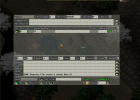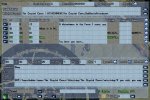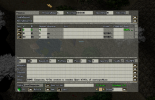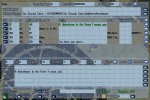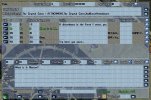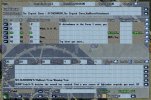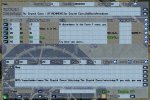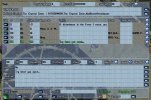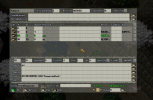Remove the spaces in the entry lines. That's the first problem. You have:
That's never going to work with Xml. You should have:
You have the DependsOn set to -1, that's not going to work. If you enter a -2 both the TrigOnCarried and NoTrigOnCarried fields will be checked prior to the QuestNPC actually triggering. If left blank, or with a value of 0 or 1, the TrigOnCarried and NoTrigOnCarried fields will be IGNORED.
NOTE: This is for the FIRST line entry ONLY. Every other DependsOn field should match with the line where the Keyword comes from. For example: Lets say your first two keyword options are Yes and No and they originate in the dialog from line entry 0 (which you really shouldn't do, skip to Line Entry 10). When you're entering the information for the Line Entry dealing with the Yes response, the DependOns would be 10, since the Yes response originated from Line Entry 10. Also, the No response DependsOn would also be 10, because it originated from Line Entry 10. Does that make sense?
What I usually do when I build a dialog is Line Entry 0 is what happens when a player triggers the mob (or item). I attached the dialog for a quest that is pretty simple and straightforward.
Line 0, Image 1: DependsOn is set to -2 because this particular dialog should ONLY trigger when the TrigOnCarried/NoTrigOnCarried conditions are met. You will also notice that not much is happening, other than a text entry. The text is what the mob says when the player triggers the dialog.
Line 10, Image 2: Notice the DependsOn has changed to 0 because Line 0 MUST happen in order to advance the dialog. The keyword entry is what the player says, out loud in this case, to the mob.
Line 20, Image 3: Once again the DependsOn has changed, but now it says 10, because we want the dialog to flow in a particular order, so Line 10 MUST happen before the dialog will advance to Line 20. This line also contains the actual Gump creation, in this case, Gump,Yoda,4/
NOTE: You would also see that the keywords are created in the Gump line if you opened the line entry book.
Line 30, Image 4: DependsOn has changed to 20 because this is our first Keyword (Okay) usage after the Gump creation. In this case, the Action line is giving a QuestHolder to the player. This is optional really. You don't HAVE to give out a questholder. It could be an item or nothing at all. It IS helpful to give out a questholder, because you can build chain quests much more easily.
Line 40, Image 5: DependsOn is STILL 20 because this is the second Keyword (No) option. You don't have to do anything here, but I usually put something to taunt players with and also to make sure the dialog is actually completing and not getting hung up anywhere.

